Understanding the Importance of Pet Friendly Flooring
Pet friendly flooring is an important consideration for pet owners, as it can contribute to the wellbeing of their pets and provide a safe and comfortable environment for them to live in. Pet friendly flooring is designed to be durable and easy to clean, while also providing a comfortable surface for pets to walk and play on.
Pet friendly flooring is typically made from materials that are resistant to scratches, stains, and wear and tear. This makes it ideal for pet owners, as it can withstand the daily wear and tear of pet claws and paws. Additionally, pet friendly flooring is often designed to be easy to clean and maintain, making it ideal for pet owners who want to keep their home looking its best.
Pet friendly flooring can also contribute to the wellbeing of pets by providing a comfortable surface for them to walk and play on. Many pet friendly flooring materials are designed to be soft and cushioning, which can help to reduce the impact of pet claws and paws on the floor. This can help to reduce the risk of injury to pets, as well as providing a comfortable surface for them to walk and play on.
Finally, pet friendly flooring can help to reduce the amount of allergens in the home. Many pet friendly flooring materials are hypoallergenic, which means they are less likely to trap pet dander, dust, and other allergens. This can create a healthier living environment for both pets and their owners.
Overall, pet friendly flooring is an important consideration for pet owners as it can contribute to the wellbeing of their pets and provide a safe and comfortable environment for them to live in.
The Benefits of Pet Friendly Flooring for Home and Business Owners
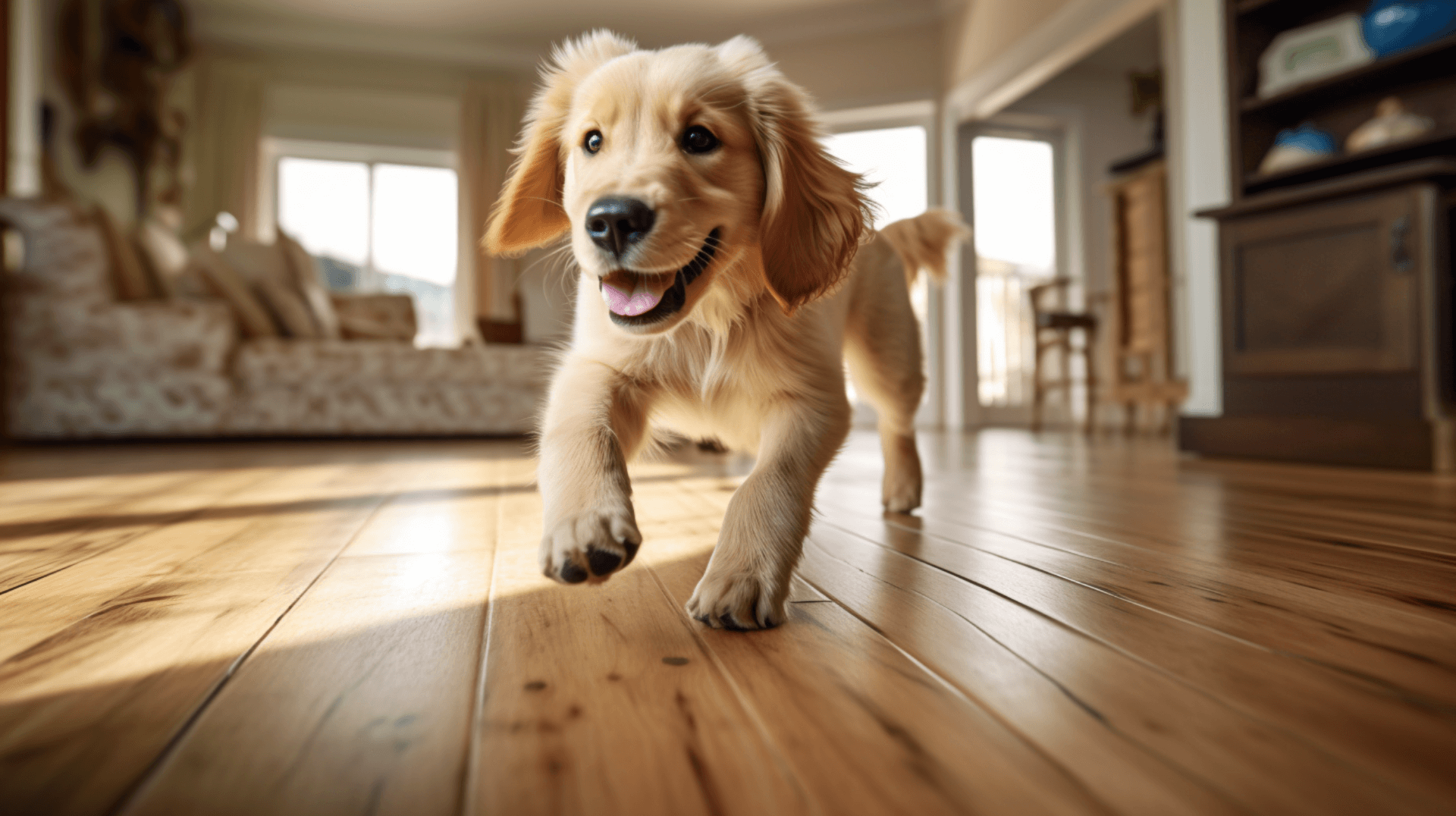
Pet friendly flooring is an ideal choice for both home and business owners, as it offers a range of benefits that can add value to a property and create a safe and comfortable environment for pets.
Key Benefits
Pet friendly flooring is designed to be durable and easy to clean, making it ideal for pet owners who want to keep their home looking its best. Additionally, pet friendly flooring is often designed to be soft and cushioning, which can help to reduce the impact of pet claws and paws on the floor and reduce the risk of injury to pets. Many pet friendly flooring materials are also hypoallergenic, which means they are less likely to trap pet dander, dust, and other allergens, creating a healthier living environment for both pets and their owners.
Adding Value
Pet friendly flooring can add value to a property by providing a safe and comfortable environment for pets. Additionally, pet friendly flooring is designed to be durable and easy to clean, making it ideal for pet owners who want to keep their home looking its best. This can help to increase the value of a property, as it can make it more attractive to potential buyers.
Smart Choice for Businesses
Pet friendly flooring is a smart choice for businesses, particularly those that are pet-friendly establishments. It ensures the safety of employees and customers by providing a comfortable and durable surface for pets to walk and play on. Additionally, pet friendly flooring helps businesses comply with OSHA regulations and reduces the risk of costly fines and lost production time due to injuries.
Overall, pet friendly flooring offers durability, easy maintenance, comfort, and hypoallergenic properties, making it an ideal choice for both home and business owners. It adds value to a property and creates a safe and comfortable environment for pets, making it a smart choice for businesses as well.
Engineered Wood: A Comprehensive Overview

Engineered Wood: A Comprehensive Overview
Engineered wood is a type of wood product that is designed to be stronger, more durable, and more cost-effective than traditional solid wood. It is made by bonding together thin layers of wood veneers with adhesives, creating a strong and stable product. Engineered wood offers several unique properties that make it an ideal choice for both home and business owners.
What is engineered wood?
Engineered wood is created by bonding together thin layers of wood veneers with strong adhesives. The veneers are typically made from hardwood, such as oak, maple, or walnut, and are arranged in a cross-grain pattern. This cross-grain pattern helps to reduce the risk of warping, shrinking, and cracking. The adhesives used in engineered wood are typically waterproof and heat-resistant, making them suitable for a variety of applications.
How is engineered wood made?
Engineered wood is made by bonding together thin layers of wood veneers with strong adhesives. The veneers are arranged in a cross-grain pattern and then pressed together under high pressure and heat. This process creates a solid and durable product that is less likely to warp or expand and contract with changes in humidity. The top layer of engineered wood is usually a hardwood veneer, giving it a natural wood look and feel.
What are the unique properties of engineered wood?
Engineered wood has several unique properties that make it an ideal choice for home and business owners. it is more stable than solid wood, meaning it is less likely to warp or expand and contract with changes in humidity. This stability makes it suitable for areas with high levels of moisture or temperature fluctuations. engineered wood is more resistant to scratches and dents, making it a great choice for high-traffic areas. It is also more durable than solid wood, ensuring it can withstand daily wear and tear. Additionally, engineered wood is easier to install than solid wood, as it can be cut and shaped to fit any space. It is also more cost-effective, as it uses less wood and requires less labor for installation. Finally, engineered wood is available in a variety of finishes, allowing homeowners and business owners to choose a style that suits their preferences and design aesthetic.
Why Engineered Wood is the Perfect Choice for Pet Friendly Flooring
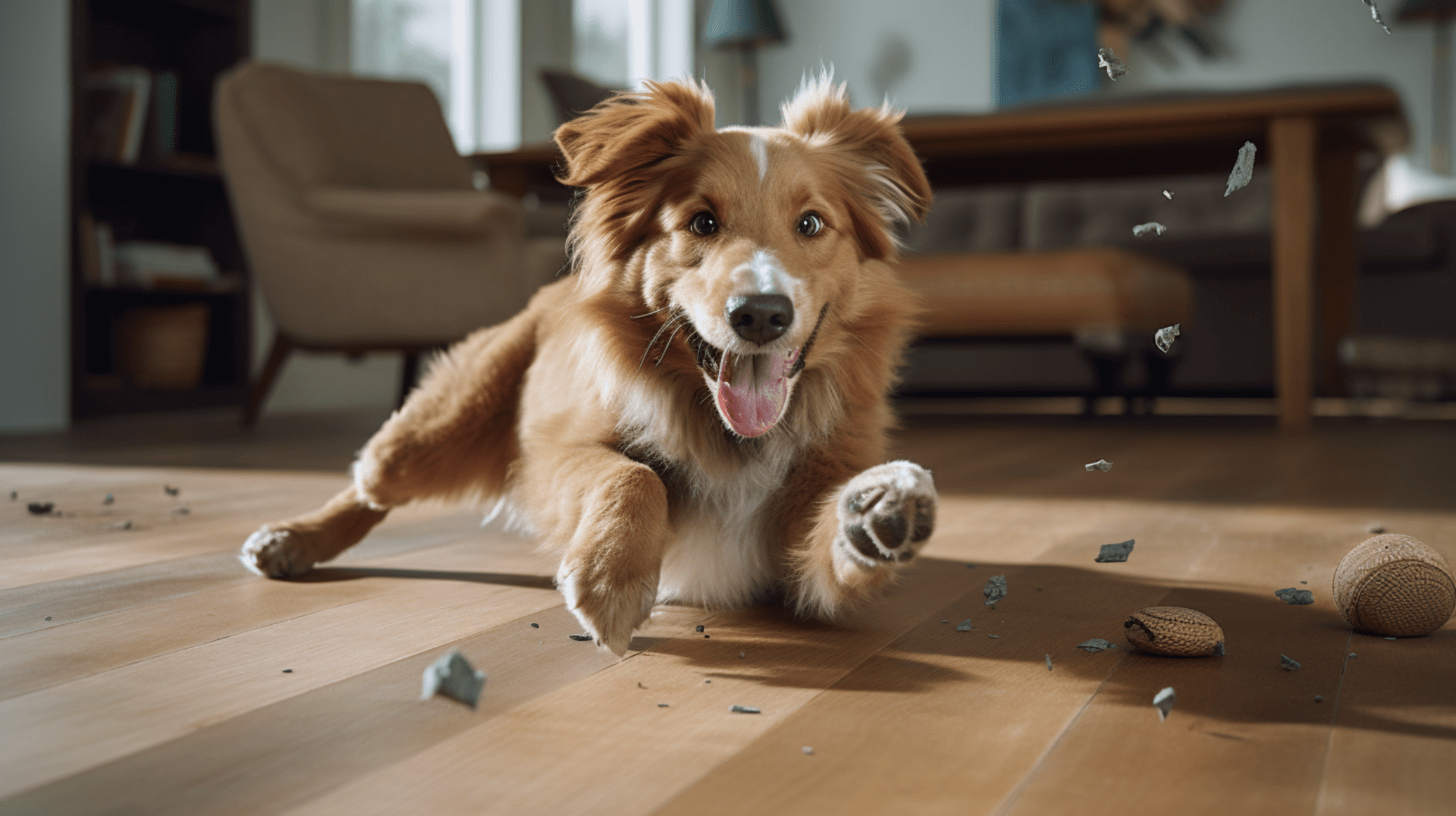
Engineered wood is the perfect choice for pet friendly flooring, as it offers a range of benefits that make it ideal for pet owners. It is designed to be durable and easy to clean, making it ideal for pet owners who want to keep their home looking its best. Additionally, engineered wood is often designed to be soft and cushioning, which can help to reduce the impact of pet claws and paws on the floor and reduce the risk of injury to pets. Many engineered wood materials are also hypoallergenic, which means they are less likely to trap pet dander, dust, and other allergens, creating a healthier living environment for both pets and their owners.
Engineered wood is specifically engineered to withstand the wear and tear caused by pets. It is resistant to scratches, stains, and wear and tear, ensuring that it can withstand the impact of pet claws and paws without showing signs of damage. This durability makes it an ideal choice for pet owners who want a flooring option that can handle the daily activities of their furry friends.
In addition to its durability, engineered wood is also easy to clean and maintain. Pet accidents and spills can be easily wiped away without leaving stains or odors, making it a practical choice for homes with pets. The soft and cushioning nature of engineered wood provides a comfortable surface for pets to walk and play on, reducing the risk of injury and providing them with a more enjoyable living environment.
Furthermore, the hypoallergenic properties of many engineered wood materials make it a healthier choice for both pets and their owners. It is less likely to trap pet dander, dust, and other allergens, creating a cleaner and more allergen-free living environment.
Overall, engineered wood is the perfect choice for pet friendly flooring due to its durability, easy maintenance, comfort, and hypoallergenic properties. It provides a practical and stylish flooring option that can withstand the demands of pet ownership while creating a safe and comfortable environment for both pets and their owners.
Exploring the Durability of Engineered Wood Flooring
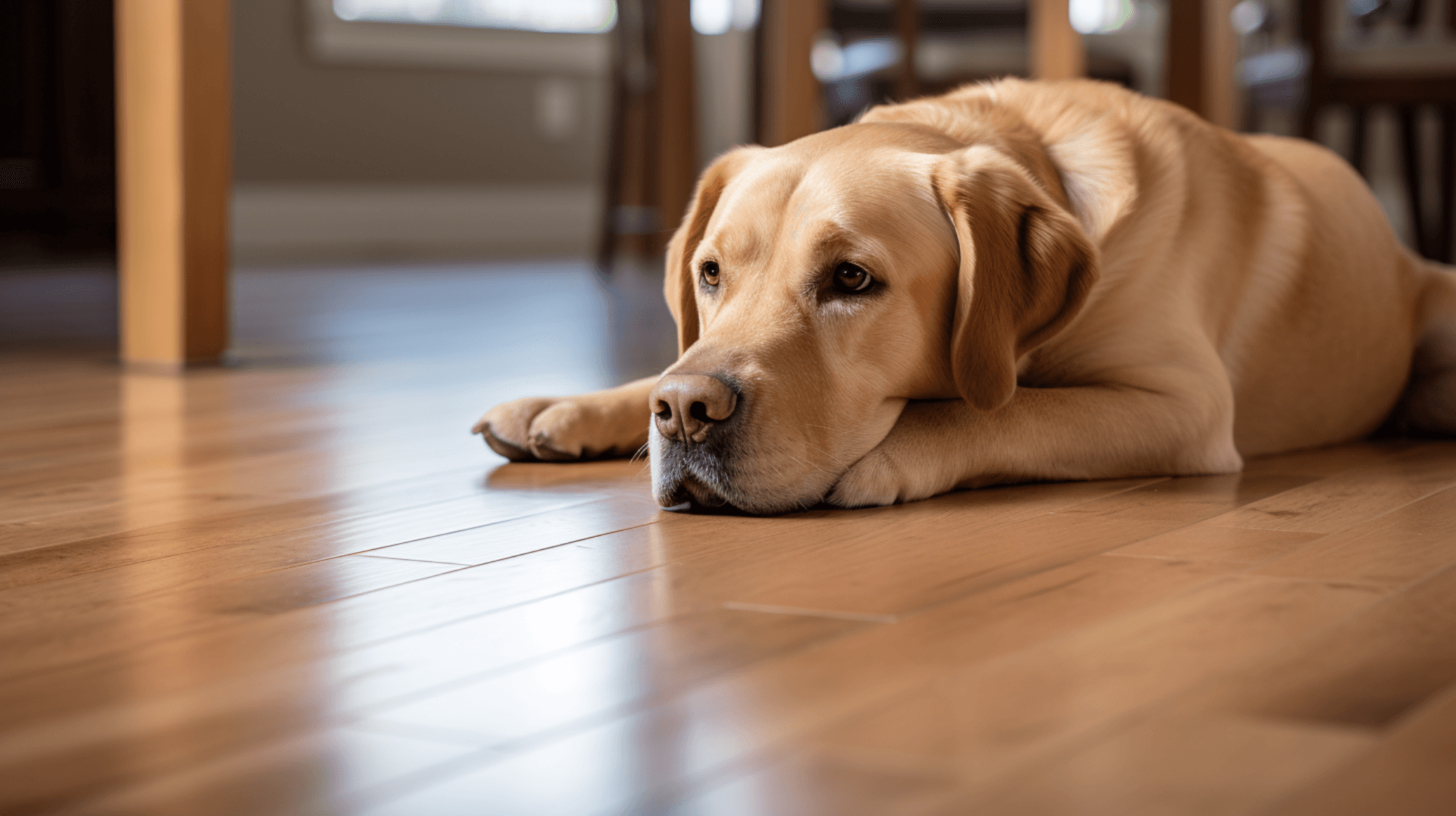
Engineered wood flooring is renowned for its durability and is a popular choice for both home and business owners. It is designed to be strong and stable, making it less likely to warp, shrink, or crack. Additionally, engineered wood is more resistant to scratches and dents than traditional solid wood, making it a great choice for high-traffic areas.
The durability of engineered wood flooring is largely determined by the quality of the materials used and the manufacturing process. High-quality engineered wood flooring is made from hardwood veneers that are arranged in a cross-grain pattern and bonded together with strong adhesives. This process creates a solid and durable product that is less likely to warp or expand and contract with changes in humidity. The finish of the engineered wood flooring also plays a role in its durability, as many engineered wood flooring products are finished with a protective coating that helps to protect the wood from scratches and dents, as well as reduce the risk of water damage.
In comparison to other flooring types, engineered wood flooring is one of the most durable options available. It is more resistant to scratches and dents than traditional solid wood and is designed to withstand the demands of high-traffic areas. It is also less likely to warp or expand and contract with changes in humidity than laminate, vinyl, and carpet. Additionally, engineered wood is more cost-effective than solid wood, as it uses less wood and requires less labor for installation.
Overall, engineered wood flooring offers exceptional durability due to its construction, materials, and protective finishes. It is a reliable choice for both home and business owners who prioritize long-lasting and resilient flooring options.
Maintenance and Care for Engineered Wood Flooring
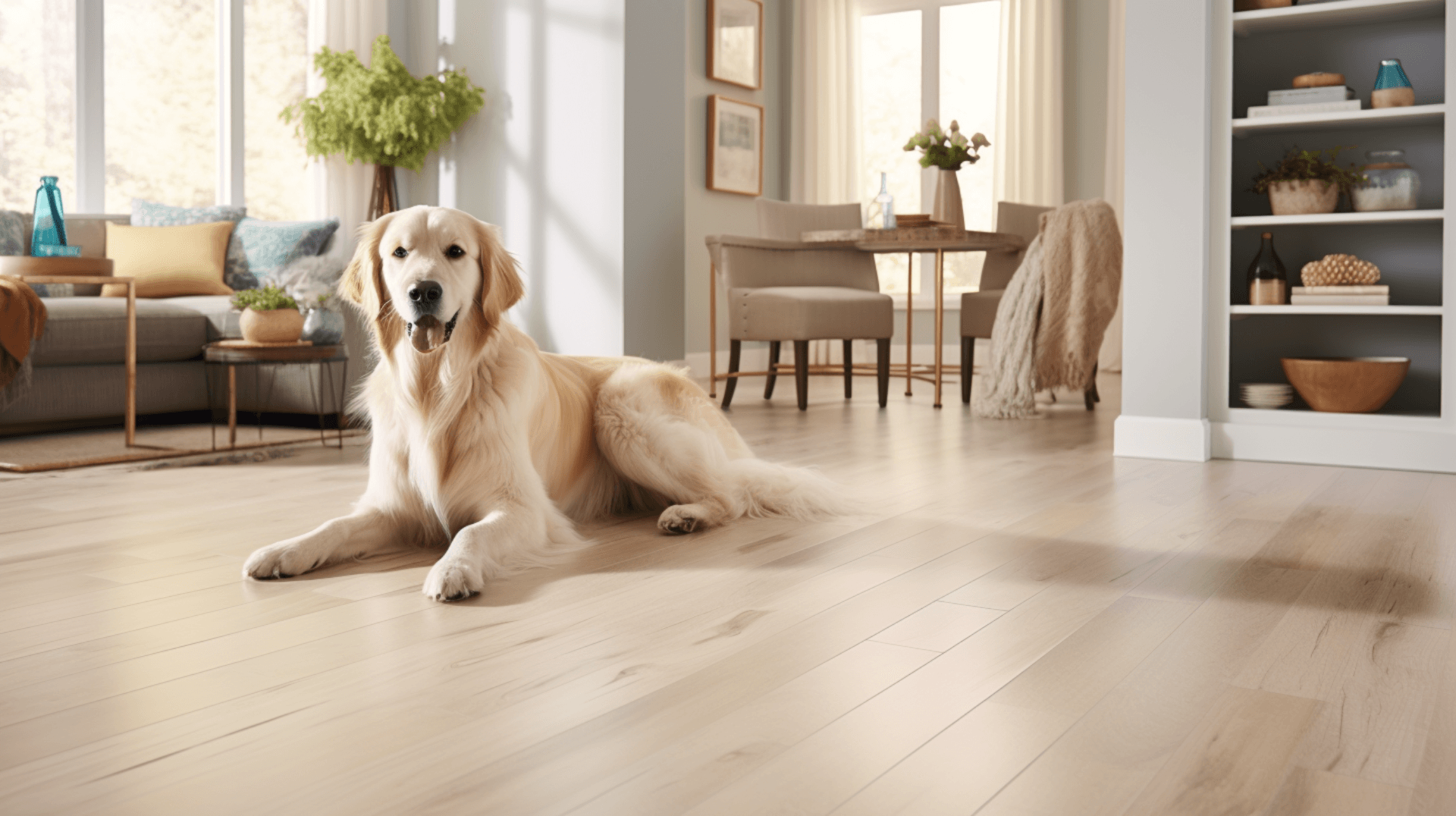
Maintenance and Care for Engineered Wood Flooring:
Proper maintenance and care are essential for keeping engineered wood flooring in excellent condition and extending its lifespan. Here are some tips for cleaning and caring for engineered wood flooring:
- Regular Cleaning: Regularly sweep or vacuum your engineered wood flooring to remove dirt and debris. This will help prevent scratches and keep your floor looking its best. Use a soft-bristle broom or a vacuum cleaner with a brush attachment to avoid scratching the surface.
- Spot Cleaning: For spills and stains, use a damp cloth or mop to spot clean the affected area. Avoid using harsh chemicals or abrasive cleaners, as these can damage the finish of the flooring. Instead, use a mild cleaning solution specifically designed for engineered wood flooring.
- Protective Coating: Consider applying a protective coating to your engineered wood flooring to protect it from scratches and wear and tear. This can help extend the life of your flooring and keep it looking its best. Follow the manufacturer’s instructions for applying the coating and reapply as needed.
- Avoid Moisture: Moisture can damage engineered wood flooring, so it is important to avoid excessive moisture. Wipe up spills immediately and use a dehumidifier in areas with high humidity. Avoid wet mopping the floor, as excess water can seep into the wood and cause warping or swelling.
- Furniture Protection: Use furniture protectors on the legs of your furniture to prevent scratches and dents on your engineered wood flooring. Felt pads or rubber caps can be placed under furniture legs to provide a cushioning effect and reduce the risk of damage.
Proper maintenance and care of engineered wood flooring can significantly extend its lifespan. Regular cleaning helps prevent dirt and debris from scratching the surface, while spot cleaning ensures that spills and stains are promptly addressed. Applying a protective coating adds an extra layer of defense against wear and tear. By avoiding excessive moisture and using furniture protectors, you can prevent damage and maintain the beauty of your engineered wood flooring for years to come.
Costeffectiveness of Engineered Wood Flooring

Engineered wood flooring is a highly cost-effective option for both home and business owners. It offers several advantages over traditional solid wood flooring, making it a popular choice for those looking for a durable and affordable flooring solution.
The cost of engineered wood flooring can vary depending on several factors, including the quality of the materials used, the thickness of the veneers, the insulation used, and the finish of the flooring. Higher-quality engineered wood flooring, with thicker veneers and better insulation, will generally come at a higher cost. Additionally, the inclusion of a protective coating in the finish can increase the cost of the flooring.
When compared to other flooring types, engineered wood flooring is one of the most cost-effective options available. It is more affordable than traditional solid wood flooring and often more durable than laminate, vinyl, or carpet. Engineered wood flooring offers a balance between cost, durability, and aesthetic appeal, making it a practical and cost-effective choice for both home and business owners.
Overall, the cost-effectiveness of engineered wood flooring lies in its durability, affordability, and ability to mimic the appearance of solid wood. It provides a long-lasting and stylish flooring option that can withstand the demands of daily use while remaining budget-friendly.
The Environmental Impact of Choosing Engineered Wood Flooring

Engineered wood flooring is an environmentally friendly option for both home and business owners. It is made from a combination of hardwood veneers and other materials, such as plywood, which are bonded together with strong adhesives. This process reduces the amount of wood used and creates a durable and long-lasting product.
The production of engineered wood flooring also involves sustainable practices. The hardwood veneers used in the production of engineered wood flooring are sourced from sustainably managed forests, and the manufacturing process is designed to reduce waste and energy consumption. Additionally, many engineered wood flooring products are finished with a protective coating that helps to reduce the need for chemical cleaners and other harsh cleaning products.
Choosing engineered wood flooring is a great way to contribute to environmental conservation. By using less wood in the production process, fewer trees are cut down, which helps to reduce deforestation and preserve natural habitats. Additionally, engineered wood flooring is designed to last for many years, reducing the need for frequent replacement and reducing the amount of waste sent to landfills.
Overall, engineered wood flooring is an environmentally friendly option for both home and business owners. It is made from sustainably sourced materials, involves sustainable production practices, and helps to reduce waste and deforestation.
The Aesthetic Appeal of Engineered Wood Flooring
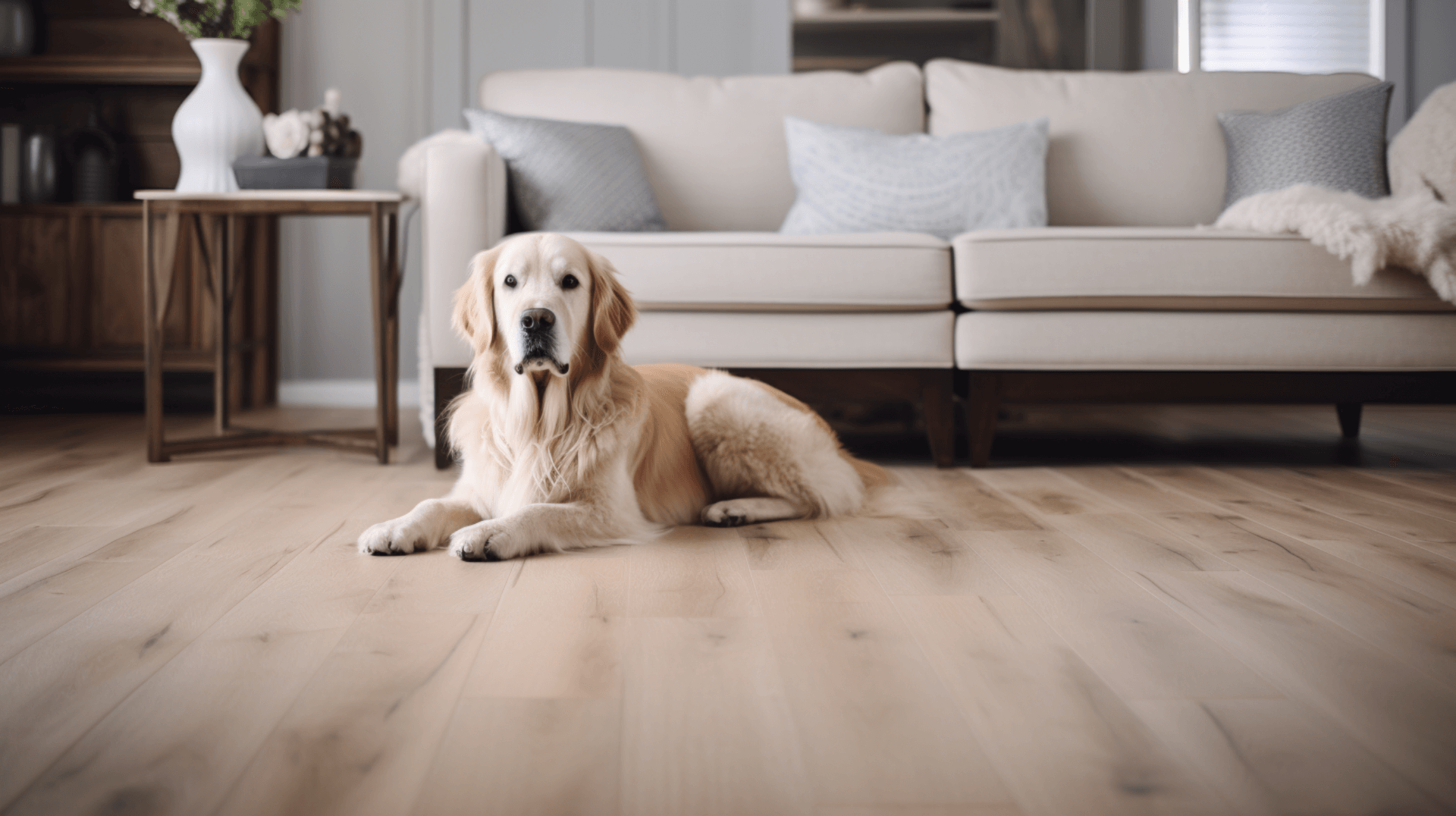
Engineered wood flooring is a popular choice for both home and business owners due to its aesthetic appeal and cost-effectiveness. It is designed to mimic the look of solid wood, offering a natural and timeless look that can enhance the beauty of any space.
Engineered wood flooring is available in a variety of styles and finishes, allowing you to choose the perfect look for your home or business. From traditional hardwood to exotic species, there is a wide range of options to choose from. Additionally, engineered wood flooring is available in a variety of finishes, including matte, glossy, and distressed. This allows you to customize the look of your flooring to match your decor.
When choosing the right style of engineered wood flooring for your space, it is important to consider the existing decor and the overall look you are trying to achieve. Consider the color, texture, and finish of the flooring to ensure it complements the existing decor. Additionally, consider the size of the room and the amount of natural light it receives, as this can affect the look of the flooring.
For a modern and contemporary look, consider choosing engineered wood flooring with a smooth finish and lighter tones. This can create a sleek and minimalist aesthetic. On the other hand, for a more traditional look, opt for a darker and distressed finish, which can add warmth and character to the space. The choice of wood species can also contribute to the overall aesthetic, with lighter woods like oak providing a more casual and rustic feel, while darker woods like walnut offering a more luxurious and elegant look.
Overall, engineered wood flooring offers a wide range of styles and finishes that can enhance the aesthetic appeal of any space. By considering the existing decor and choosing the right style and finish, you can create a cohesive and visually pleasing environment.
Installation Process of Engineered Wood Flooring
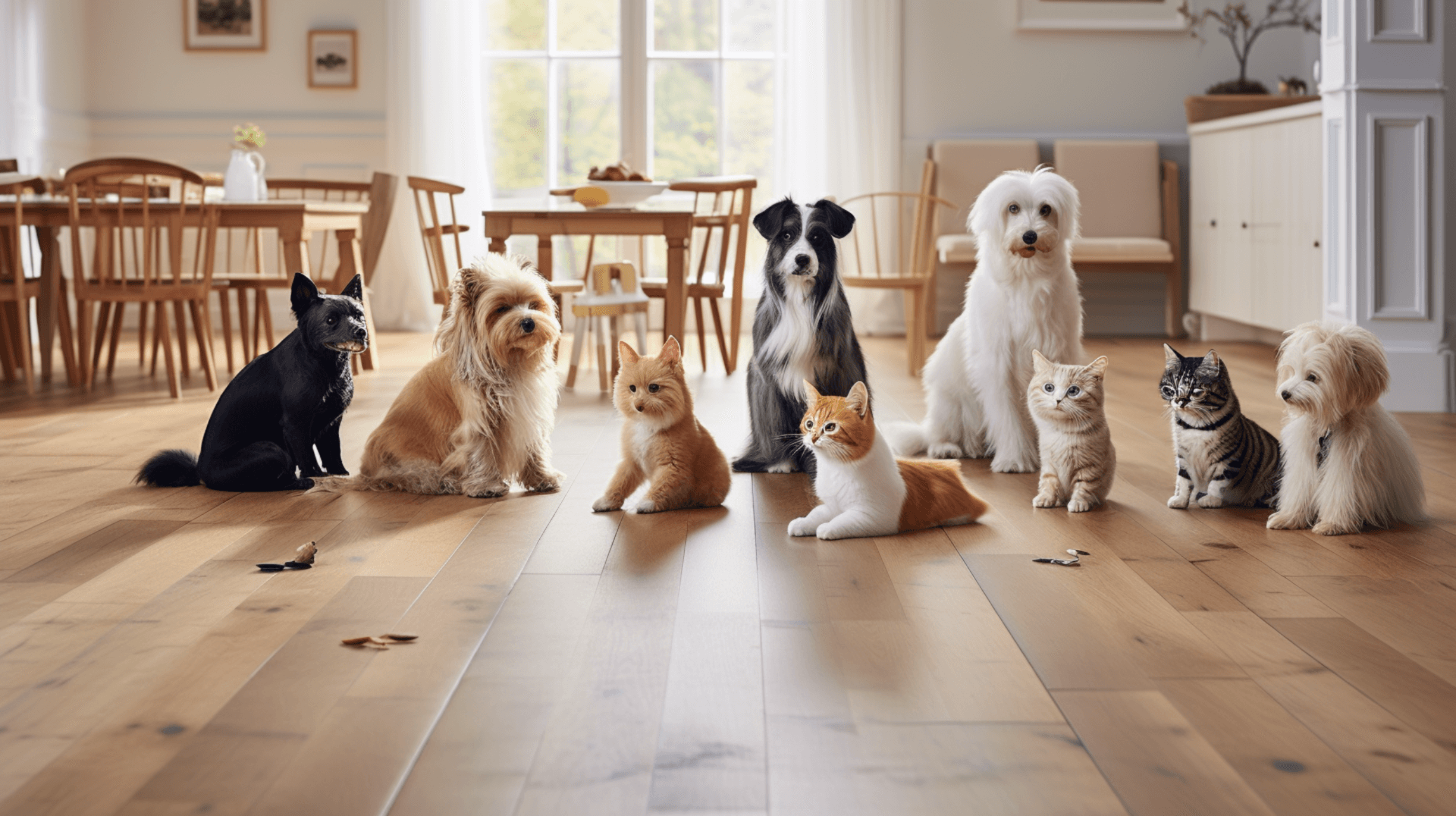
Installing engineered wood flooring is a relatively straightforward process that requires proper preparation and attention to detail. Here are the necessary steps for a successful installation:
- Prepare the subfloor: Remove any existing flooring and ensure the subfloor is clean, level, and free of debris. Check for moisture levels and use a moisture barrier if necessary. Install the appropriate insulation materials to maintain the flooring’s insulation properties.
- Acclimate the flooring: Allow the engineered wood planks to acclimate to the room’s temperature and humidity levels for at least 48 hours before installation. This helps prevent warping or shrinking after installation.
- Lay the planks: Start by laying the first row of planks along the longest wall, leaving a 1/2-inch gap between the planks and the wall to allow for expansion. Use a pneumatic flooring stapler or adhesive to secure the planks to the subfloor. Stagger the joints between planks for a natural look.
- Cut and fit the planks: Measure and cut the planks to fit around obstacles such as doorways or vents. Use a circular saw or jigsaw to make precise cuts. Ensure the planks fit tightly together without gaps.
- Finishing touches: Install baseboards or trim to cover the expansion gap and provide a finished look. Use a nail gun or adhesive to secure the trim in place.
Common challenges in the installation process include dealing with uneven subfloors, addressing moisture issues, and ensuring proper alignment and tight joints. To overcome these challenges, it is important to address any subfloor issues before installation, use a moisture barrier if needed, and carefully follow the manufacturer’s instructions for installation.
By following these steps and addressing any challenges that arise, home and business owners can achieve a successful and long-lasting installation of engineered wood flooring.
Expert Advice: Making the Most of Your Engineered Wood Flooring

Expert Advice: Making the Most of Your Engineered Wood Flooring
Proper maintenance and care are essential for maintaining the beauty and durability of engineered wood flooring. Here are some expert tips to help you make the most of your flooring:
- Regular Cleaning: Regularly sweep or vacuum your engineered wood flooring with a soft-bristle broom or a vacuum cleaner with a brush attachment to remove dirt and debris. This will prevent scratches and keep your floor looking its best.
- Spot Cleaning: For spills and stains, use a damp cloth or mop to spot clean the affected area. Avoid using harsh chemicals or abrasive cleaners, as these can damage the finish of the flooring. Instead, use a mild cleaning solution specifically designed for engineered wood flooring.
- Protective Coating: Consider applying a protective coating to your engineered wood flooring to protect it from scratches and wear and tear. Follow the manufacturer’s instructions for applying the coating and reapply as needed. This can help extend the life of your flooring and keep it looking its best.
- Furniture Protection: Use furniture protectors on the legs of your furniture to prevent scratches and dents on your engineered wood flooring. Felt pads or rubber caps can be placed under furniture legs to provide a cushioning effect and reduce the risk of damage.
To handle common issues with engineered wood flooring, such as scratches, dents, and discoloration, it is important to use furniture protectors, avoid dragging heavy objects across the floor, and protect the flooring from direct sunlight. Additionally, using breathable throw rugs in high-traffic areas can help prevent wear and tear.
Recommended products for the care and maintenance of engineered wood flooring include mild cleaning solutions specifically designed for this type of flooring. Avoid using harsh chemicals or abrasive cleaners, as they can damage the finish. Additionally, consider using a high-quality protective coating recommended by the manufacturer to enhance the durability and longevity of your flooring.
By following these expert tips and using recommended products, you can maintain the beauty and durability of your engineered wood flooring for many years to come.
Contact GJP Floor Sanding: Your Partner in Pet Friendly Flooring Solutions

GJP Floor Sanding is a leading provider of pet-friendly flooring solutions. With over 25 years of experience in the flooring industry, we offer a wide range of services to help you choose and install the perfect engineered wood flooring for your home or business.
Our services include:
- Flooring Consultation: GJP Floor Sanding offers a free consultation to help you choose the right engineered wood flooring for your space. We will assess your needs and provide expert advice on the best flooring options for your home or business, including the best options for pet-friendly flooring.
- Installation: GJP Floor Sanding provides professional installation services to ensure your engineered wood flooring is installed correctly and to the highest standards. We will also provide advice on how to maintain and care for your flooring, as well as how to address any existing damage to the flooring or subfloor.
- Refinishing: GJP Floor Sanding offers refinishing services to restore the beauty of your engineered wood flooring. We use the latest techniques and products to ensure your flooring looks its best.
- Underfloor Insulation: GJP Floor Sanding also offers underfloor insulation services to reduce heat loss and improve energy efficiency in your space.
To get in touch with GJP Floor Sanding for your flooring needs, you can contact us at 01234. Our experienced team of professionals will be happy to assist you in choosing and installing the perfect engineered wood flooring for your home or business.
